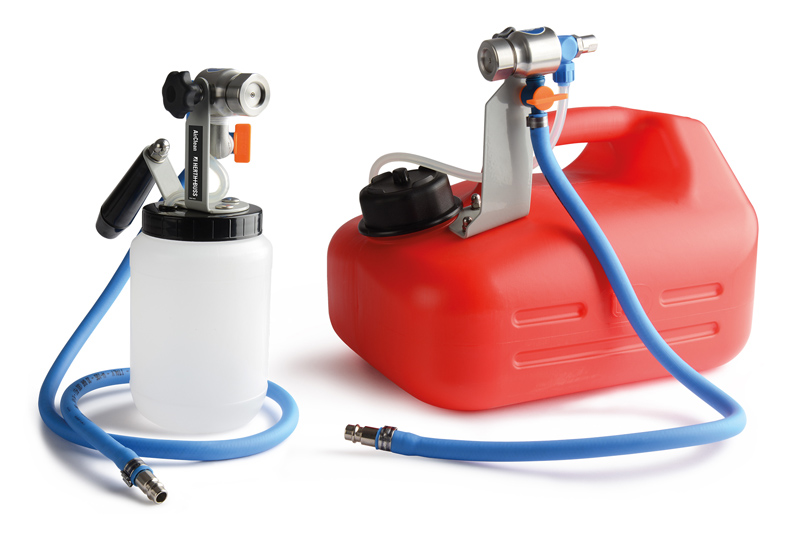
Warm and moist environments such as A/C systems are the ideal breeding ground for mould, fungi and bacteria, which can multiply and proliferate over the evaporator and into the air ducts. As a consequence, they are transported into the vehicle interior with the air flow and inhaled by passengers. Herth+Buss explains why regular maintenance and cleaning of the A/C system is essential.
The problem
One property of cold objects is that moisture from the ambient air condenses on them. In vehicle A/C systems, this effect is further amplified by the fact that a great deal of air flows through the evaporator. This results in a significant formation of condensation that remains on the evaporator. This becomes very clearly visible in the shape of little puddles that form under the car in warm temperatures when the A/C system is running.
Quite simply, the system creates the perfect breeding ground for mould, fungi and bacteria. For one thing, the infestation causes unpleasant odours, while for another, it can even be dangerous for allergy sufferers and asthmatics. The whole thing becomes a problem when a vehicle is parked and the moisture lingers in the A/C box for a prolonged period.
AirClean – Professional A/C disinfection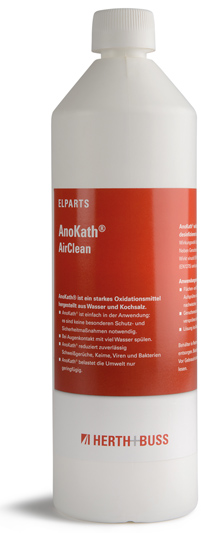
Herth+Buss has substantially expanded its portfolio of A/C system maintenance products. The AirClean system (spray gun and A/C system cleaner) from the Elparts range disinfects the vehicle interior and A/C system with minimum effort, reducing germs, fungi, viruses and bacteria in the process. There are many scenarios where using AirClean makes perfect sense, especially in workshops: before selling a vehicle, after buying a used car, for purging the A/C system of pollen and spores and as an effective measure against mould. What’s more, there’s the opportunity to perform vehicle disinfection after repairing the A/C system – without significant work required and without harming the environment. This is an interesting added benefit for the customer.
What is AirClean and what are its advantages?
AnoKath forms the basis of the AirClean cleaner. It is a powerful oxidising agent consisting of an aqueous solution with a low sodium chloride content and is prepared by means of a special electrolysis process. The AirClean cold atomiser is able to generate floating mist from a liquid in conjunction with a compressor. The disinfection using AnoKath is based on mineral substances. The benefits are obvious: only low material costs are incurred and the time required to perform a disinfection like this is minimal. There is no need to wait after using AirClean; you can continue working inside the vehicle immediately. In other words, there is no danger of contaminating workshop staff members.
How does AirClean work?
The disinfectant can be fed into the car from outside, i.e. through the A/C system’s air intake, or from within by setting the device up in the passenger compartment. The cold mist is extremely light and floats for a long time. This means that it even gets behind all panels and reliably kills germs, spores, bacteria and viruses in doing so. When the vehicle’s air circulation system is running, the active substance is conveyed throughout the vehicle interior and into the A/C system, which is also disinfected in the process. The user is able to determine the path that the mist should take by directing the pistol’s outlet and by opening and closing the intake ducts and/or ventilation louvres.
Practical example – ten steps for successful vehicle disinfection:
Before starting with the vehicle disinfection, you should first clean the vehicle thoroughly, as dirt cannot be eliminated by the disinfection process.
- Position the vehicle in a cool, well ventilated location. It is important to always keep an eye on the temperature range during use. If it is too hot, for example, an insufficient quantity of mist will be able to form in the vehicle.
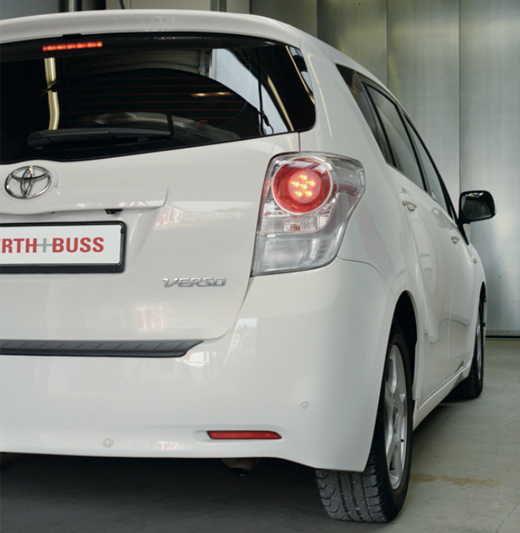
- Remove the air filter, pollen filter, etc. and dispose of them.

- Fill your spray pistol with the disinfectant. The required quantity varies depending on the vehicle size and the strength of the odour.
- Connect the device to an oil-free compressor.
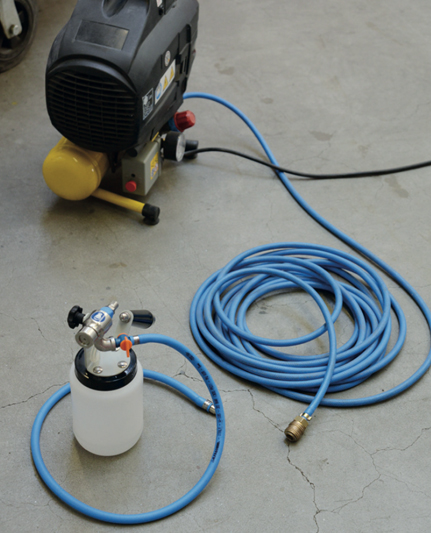
- The compressor must have adequate continuous operating ability with an effective supply quantity of >100 l/m and a set pressure of 3 to 6 bar.
- Open the bonnet and remove the cabin filter. Clean the pollen filter box if required and disinfect it. Set the ventilation system to level 1 and spray the disinfectant into the interior of the vehicle through the air intake opening of the HVAC system. Feed the agent in until the vehicle interior has become visibly filled with mist. Leave the mist to take effect for approx. one minute.
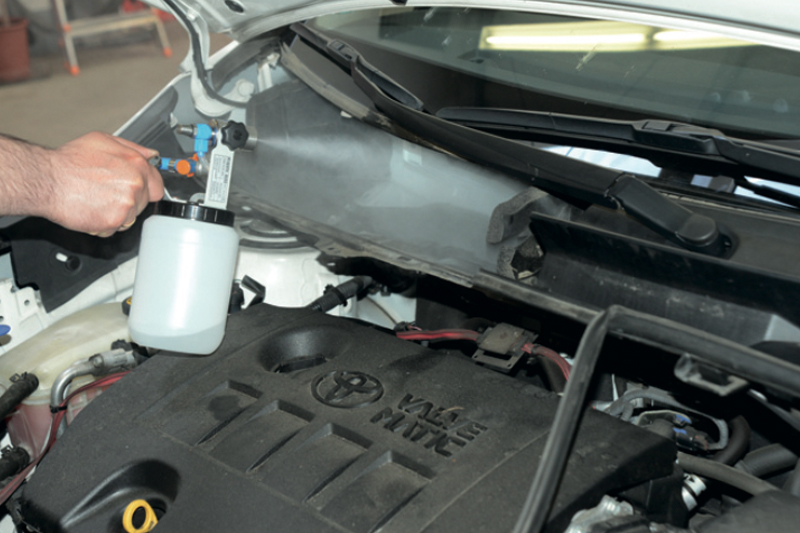
- Next is the disinfection of the interior (seats, roof liner and footwell), the A/C system’s air intake, the dashboard and the side sections. To do so, position the spray pistol in the vehicle interior. Set the blower to the medium setting at approximately 20°C, open all air nozzles and set the ventilation to circulation mode. It’s even more effective to switch through all of the settings. Doing so will feed the aerosol through all flaps and air ducts, allowing it to reach every last corner.
- Set up an external power supply for the vehicle electrical system or leave the engine running. Close the doors and leave the door that the ventilation supply hose is fed through propped open in order to prevent too much of the mist from escaping. Open the compressed air supply and let the disinfectant flow in until an obvious saturation/formation of mist is visible inside the vehicle.
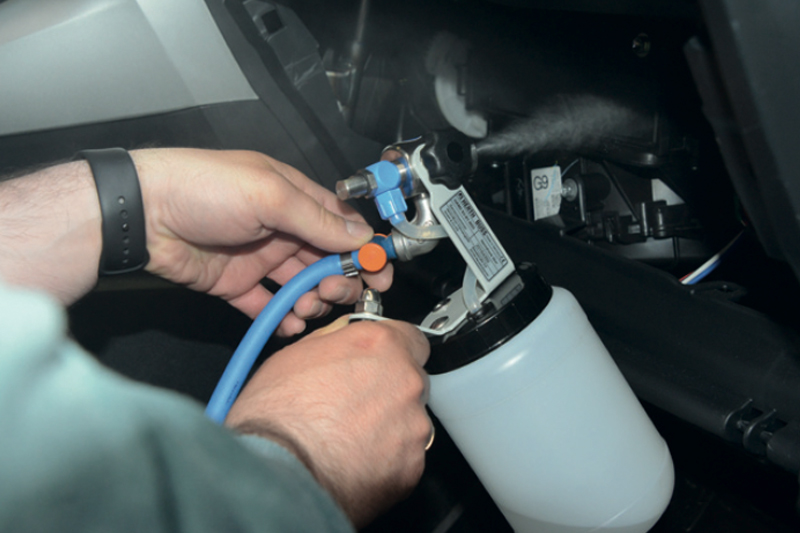
- Now turn the device off and remove the spray pistol. Close the door and let the ventilation run for a further two to five minutes.

- Next, open all doors and the boot in order to briefly air out the vehicle.
- You may now install new filters in the vehicle.
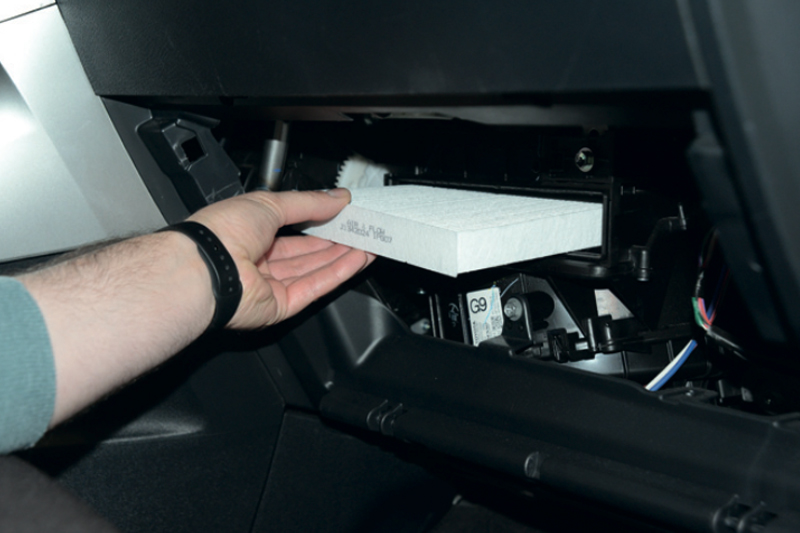
- In just 15 minutes, you have successfully disinfected the A/C system and the vehicle.










